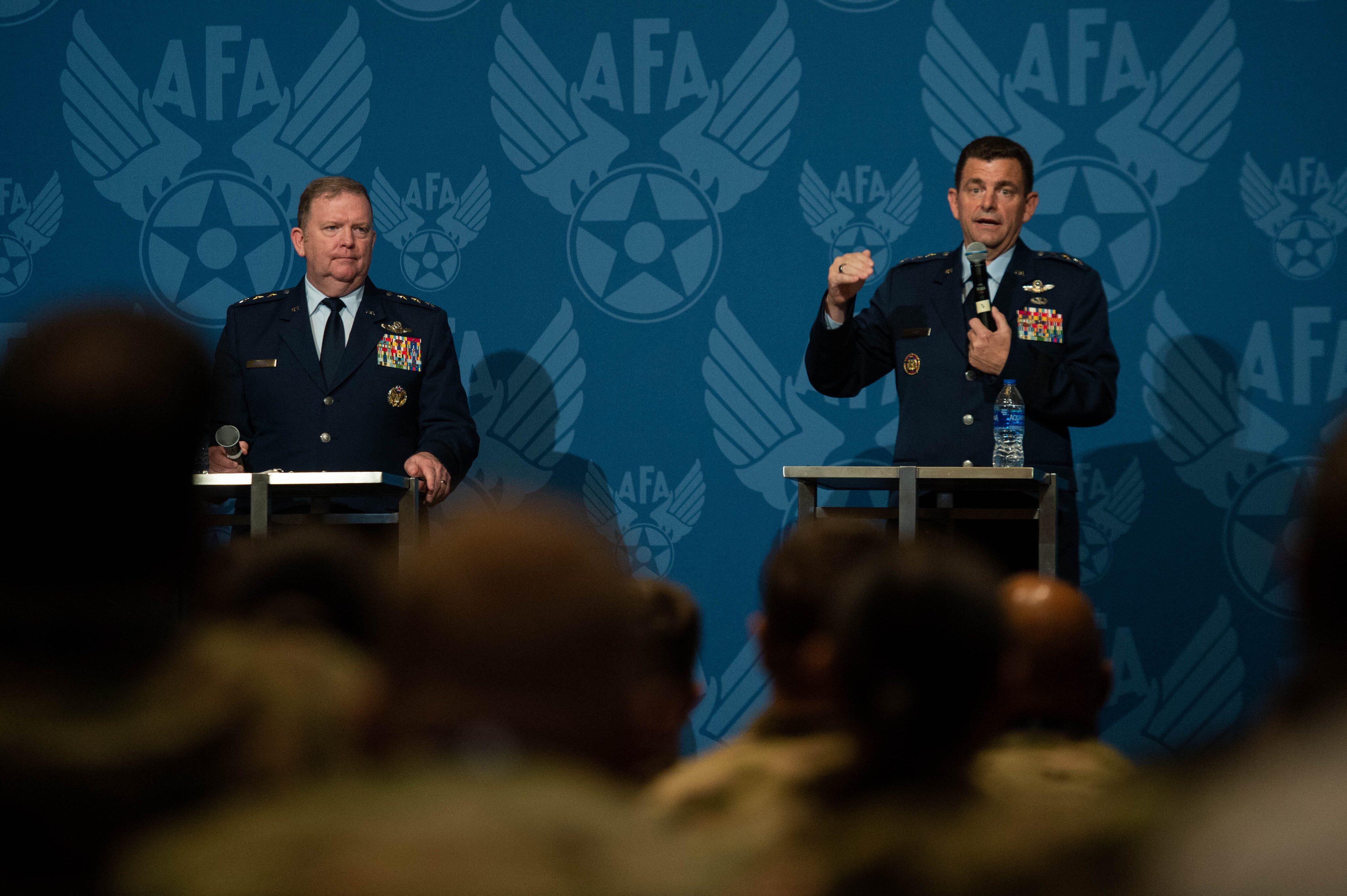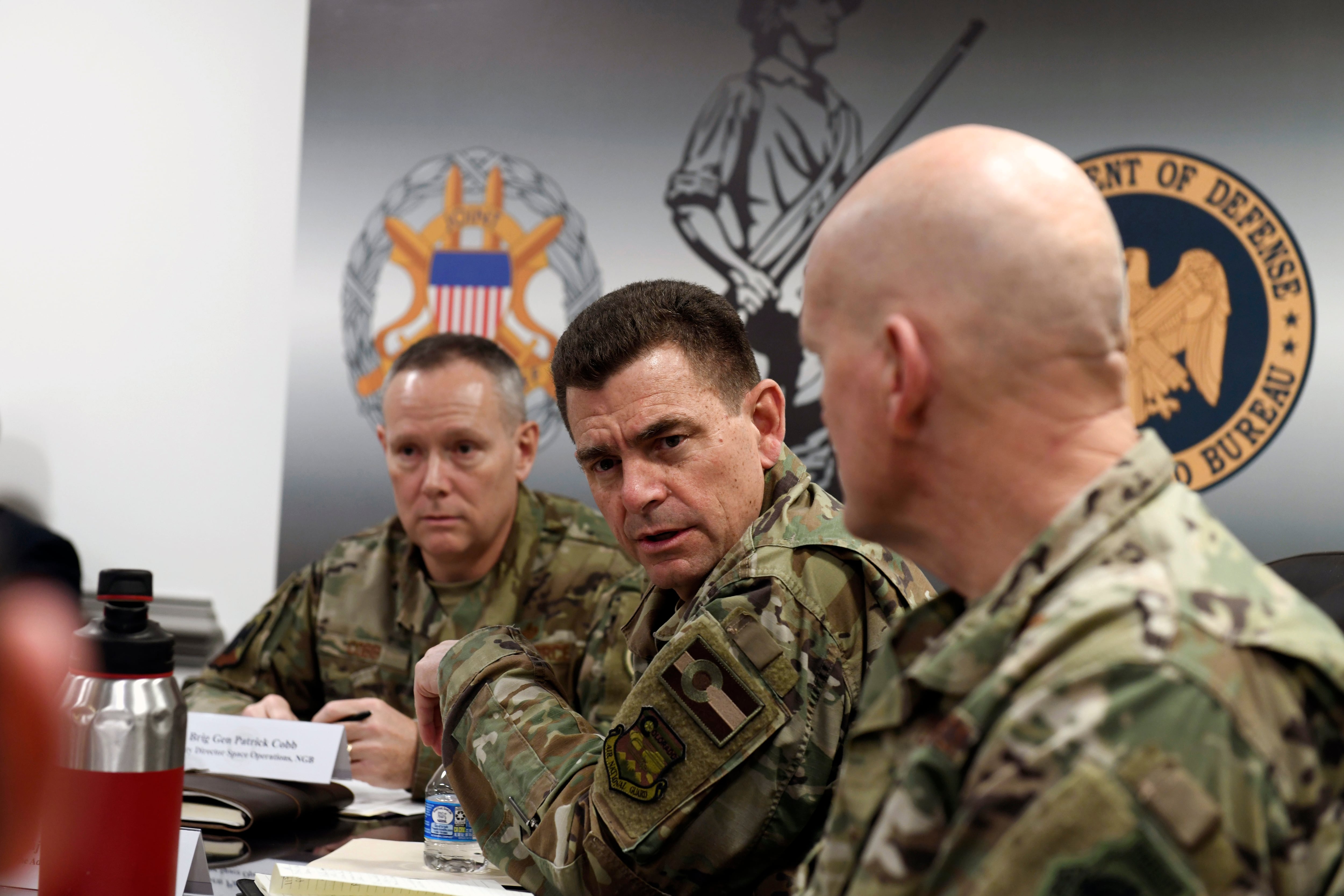Military leaders this year continued pushing Congress to create a new National Guard as part of the fledgling Space Force, but lawmakers still aren’t convinced.
The 2022 National Defense Authorization Act signed into law by President Joe Biden on Monday left out the provision to stand up a Space National Guard, and another which would rename the Air National Guard as the “Air and Space National Guard.”
Instead, lawmakers argued they don’t have enough information to create another branch of the National Guard.
RELATED

“This year’s NDAA asks for additional information from the Department of Defense about the establishment of a Space National Guard, because, simply put, we don’t know enough about the total cost and bureaucratic requirements of this expansion,” Sen. Jim Inhofe (R-OK), ranking member on the Senate Armed Services Committee, said through a spokesperson Dec. 14.
Other spokespeople for SASC chairman Sen. Jack Reed (D-RI) and the House Armed Services Committee did not respond to emails on the subject.
Under the new law, the defense secretary must review the military’s reserve component, comprised of National Guard and Reserve units across the armed forces, how their space assets are allocated now and how they could be in the future.
The Department of the Air Force, under which the Space Force falls, wants to forge ahead with its plan to bring Guard and Reserve elements into the new service. That would allow the Space Force to retain control over its own decisions on operations and personnel management, rather than having units answer to both the Air Force and the Space Force.
Officials hope the setup will be more flexible than full-time and part-time military work in the other armed forces, in part to better retain its members and to attract more private-sector talent.
“We have conducted studies on how best to design this integration and will continue to work with partners across the Department of Defense, Office of Management and Budget, National Guard Bureau, and Congress to define the way ahead and seek the legislation needed to begin this integration,” Department of the Air Force spokesperson Lynn Kirby said Tuesday.
RELATED

What should happen to Guardsmen and Reservists who handle space missions as airmen has been a point of contention since the Space Force was created in December 2019. This is the third year in a row Congress has asked the military to suggest a path forward, or to study the matter further before lawmakers take any concrete steps.
The 2021 NDAA called on the Department of the Air Force to report back on the best way to organize space-focused Guardsmen and Reservists. Chief of Space Operations Gen. Jay Raymond, the Space Force’s top officer, said in June that the paper was nearing the end of its approval process before heading to Capitol Hill.
The Defense Department has declined to answer multiple queries from Air Force Times on the report’s contents.
One school of thought suggests a two-part structure: the Space Force, encompassing a single pool of active-duty personnel and part-time reservists; and the Space National Guard to handle state and certain overseas missions.
Another proposal from the National Guard Bureau in February 2020 would have moved about 1,500 people from the Army and Air National Guards in seven states and one U.S. territory to a Space National Guard. Officials argued that would streamline chains of command by allowing those units to report to the Space Force and would minimize new costs.
More than a dozen Air National Guard units handle space missions, including airmen in Alaska, California, Colorado, Florida, Hawaii, New York, Ohio and Guam. Guardsmen operate ballistic missile warning and nuclear detection systems, help track wildfires from above, wage offensive electronic warfare, and fly communications satellites, among other space-related missions.
Last year, the Congressional Budget Office projected the Space National Guard could include as many as 5,800 people, up from approximately 1,500 space personnel in the Army and Air National Guards now. A smaller Space National Guard could cost anywhere from $100 million to $490 million a year, and $20 million to $900 million in one-time construction and equipment costs.
RELATED

CBO also anticipated that allowing for Space Force reservists would cost about $100 million each year, plus about $20 million in one-time construction costs.
The Biden administration surprised Space Guard proponents when it came out against the plan in September, citing the CBO’s cost estimate.
“Establishing a Space National Guard would not deliver new capabilities — it would instead create new government bureaucracy,” the White House said. “Air National Guard and Air Force Reserve units with space missions have effectively performed their roles with no adverse effect on DOD’s space mission since the establishment of the Space Force.”
Inhofe said the issue underscores a need to spend more money on national defense overall.
“What we do know is we have National Guardsmen performing space missions today, and so we need to get this right. Moreover, the Pentagon doesn’t have enough money to do what it is already tasked with doing — let alone expand its responsibilities,” he said.
Rachel Cohen is the editor of Air Force Times. She joined the publication as its senior reporter in March 2021. Her work has appeared in the Washington Post, the Frederick News-Post (Md.), Air and Space Forces Magazine, Inside Defense, Inside Health Policy and elsewhere.





